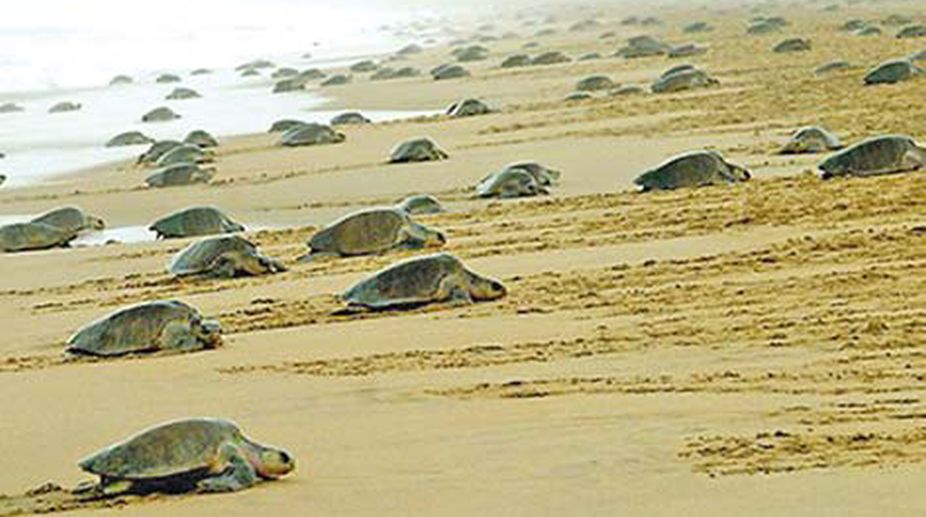The endangered Olive Ridley female turtles have begun arriving at the Gahirmatha beach, world’s largest known rookery of these species, to lay eggs, a phenomenon otherwise called arribada, a Spanish term that describes the unique natural heritage of millions of these marine species converging on the nesting ground for laying eggs.
The annual mass nesting of these delicate marine species began yesterday night in Nasi-2 beach of the Gahirmatha nesting ground.
Advertisement
The number of female turtles that crawled unto the beach to dig pits by flippers and lay eggs was on a lesser scale. “We are expecting a large turnout of turtles in the coming days for the arribada,” said Debashis Bhoi, the forest range officer, Gahirmatha forest range.
We are yet to count the number of nests dug by the turtles. However around 2,000 turtles had turned up to lay eggs. The mass nesting is likely to continue for at least ten days. The intensity of number of turtles turning up to lay eggs will pick up pace in the next three to four days.
Around 7.30 lakh lakh Olive Ridley turtles had turned up for mass nesting in the 2019- 20 nesting season with Gahirmatha beach playing host to 4.50 lakh turtles for mass nesting. We are expecting this year’s mass nesting figure getting the better of the last year’s, the official said.
The forest department is now prioritising the safety of turtles’ nests. To ensure the safety of turtle eggs, 600 metre net barricade has been installed along the casiruanna forest cover, that is lying close to nesting ground. Wildlife staffs are on the round-the-clock vigil to keep the predators like jackals, hyena and wild dogs at bay.
It’s only the female turtles that invade the nesting beaches usually at the dead of the night for laying eggs, the phenomenon otherwise described as ‘arribada’. After indulgence in instinctive egg-laying, the turtles leave the nesting ground to stride into the deep sea water. Hatchlings emerge from these eggs after 45-60 days. It is a rare natural phenomenon where the babies grow without their mother, said officials.
Apart from Gahirmatha, these threatened aquatic animals turn up at Rushikulya river mouth and Devi river mouth for mass nesting, otherwise called arribada.
An Olive Ridley usually lays about 120 to 150 eggs from which hatchlings emerge after about 45 to 50 days. But not all eggs remain intact as predators devour it.
Besides, eggs are also washed away by sea waves during high tide. The eggs are incubated in the nest and grow, sans mother, to emerge as hatchlings.











